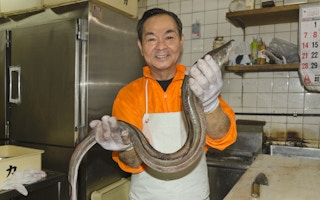Japanese eels have now been classified as “endangered” owing to habitat loss, overfishing and other factors.
The freshwater eels, which are also called Unagi, were added to the International Endangered Species list in an apparent move to speed up industrial farming of the species.
Japan is the largest consumer of eels, where they are commonly eaten as a roasted delicacy during the summer.
Rich in vitamins and minerals, Japanese eels are also used in Chinese medicine.
“
Efforts by the Japanese government to farm eels have made little progress due to the animals’ complicated migratory patterns of spawning in remote areas of the ocean
The International Union for Conservation of Nature said eel populations have declined by as much as 90 per cent over the past 30 years.
Other species of eel are also facing various levels of threat due to habitat damage and over-fishing.
“We must speed up efforts to build large-scale eel production systems,” said Japanese Agriculture Minister Yoshimasa Hayashi, adding that failure to do so would risk a very high extinction rate for the species.
Mr Hayashi also said he had little choice but to allow Japanese fishermen to continue catching baby eels for the time being.
Efforts by the Japanese government to farm eels have made little progress due to the animals’ complicated migratory patterns of spawning in remote areas of the ocean.
Experts also said barriers along waterways, pollution and changes in ocean conditions were some factors responsible for dwindling eel numbers.










